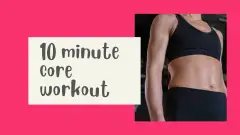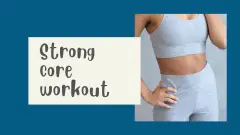This lower ab circuit targets the lowest part of the “6-pack” muscle group. A lot of ab exercises engage the upper part of the 6-pack more, leaving you with uneven tone across the muscle as a whole. If you’ve been doing some ab training but are disappointed in your lower ab tone, then this workout should help. It’s a 6 week program with the number of reps increasing each week as your strength increases.
Notes on the workout
Please read these general exercise guidelines before you start.
You’ll need some sort of cushioning for your back, ideally an exercise mat. See an exercise mat buying guide here.
Lower ab circuit exercise chart
This is a 6 week program, with the reps increasing each week. Do 3 sets of the circuit (that is, do all the exercises for the number of reps given, then start again and repeat twice more). For the leg circle, the number of reps shown is for each leg – complete your reps on your right leg and then swap to your left.
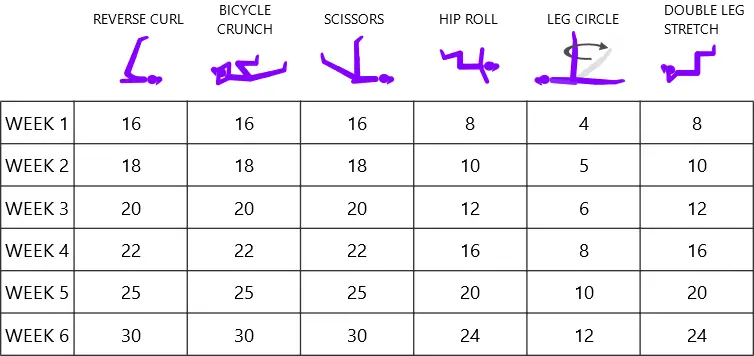
Exercise instructions
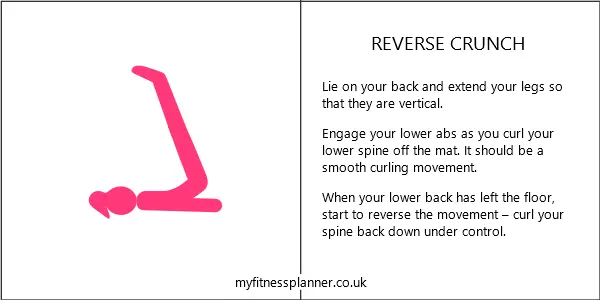
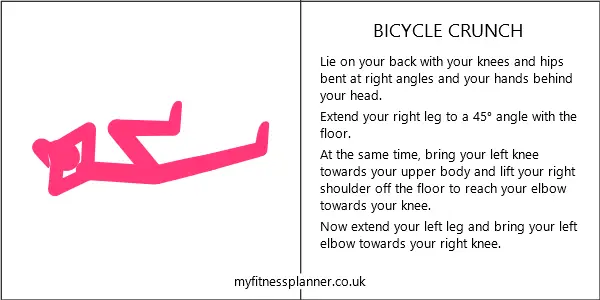
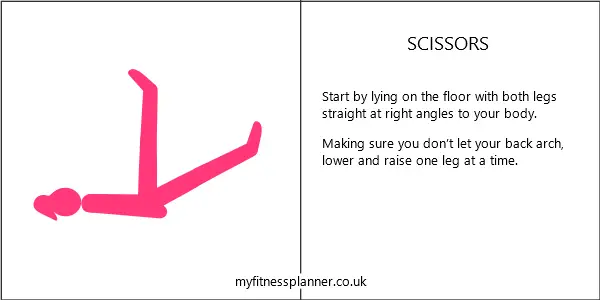
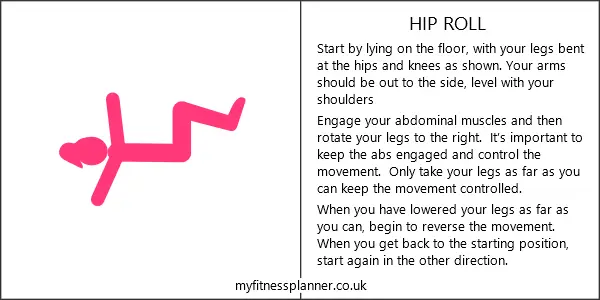

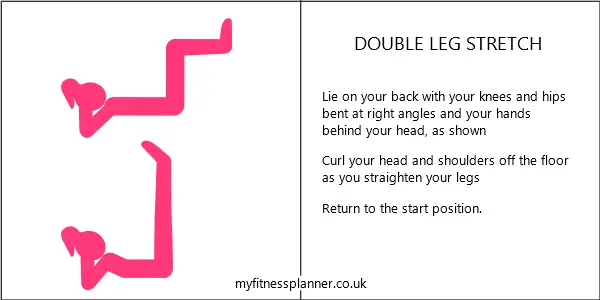
About the abdominal muscles
There are 4 layers of abdominal muscle, each with different functions.
The rectus abdominis
The most superficial (near the surface) of the abdominal muscles is the rectus abdominis, commonly known as the “six-pack.” This muscle runs vertically down the front of the abdomen and is responsible for flexing the spine. It is active in movements like crunches and sit-ups.
The oblique muscles
The middle two layers of abdominal muscles are the internal and external obliques.
The external obliques run diagonally downward towards the pelvis. The internal obliques, on the other hand, lie beneath the external obliques and run in the opposite direction, diagonally upward towards the ribcage. Both are active in rotation of the trunk and bending to the side, as well as compression of the abdominal cavity (that is, flattening the abdominal area).
The transversus abdominis
This is the deepest of the abdominal muscles and is only involved in abdominal compression – it does not play a part in movement. Core abdominal training focuses a lot on the transversus muscle. When it’s strong it flattens the abdominal area and supports the spine, protecting it from injury.
Get a PDF printable of the lower ab circuit
Sign up for My Fitness Planner updates and get the free printable download link e-mailed to you:
After you sign up, you’ll get 2 e-mails, one will have a link to your printable download and the other will be a welcome e-mail.
If the e-mails haven’t turned up within a few minutes, please check your junk folder, as some service providers have very strict filters.
Related to lower ab circuit
Ab workouts FAQ
The stock answer to this is that you can’t get rid of fat from a specific area. This is repeated frequently and emphatically by almost everyone involved in fitness. Given that it’s the go-to answer, you would think that there’s a pile of evidence to support it. In fact, the evidence is surprisingly weak. On the other hand, there’s no evidence that you can exercise to burn fat from a specific area either.
What we do know for sure is that our bodies have preferred places to store fat – and the abdominal area is one of them. So you’re not likely to have a fat-free belly until you’re a healthy weight. The best way to be a healthy weight is of course to have a healthy diet and to exercise regularly. Any exercise helps with weight control.
Even if it doesn’t burn belly fat, regular ab exercise will make a difference though. The deep core muscles pull the abdominal area flat and having a strong core can make a real difference. In fact it’s often the case that what people think is fat is just poor muscle tone allowing the abdomen to protrude.
So, the best things you can do to look slimmer around your middle are to make sure you’re a healthy weight and do some core training.
Plank holds have been an enormously popular abs exercise for years now. This is probably due to the buzz surrounding the exercise in the form of challenges and extreme hold times, rather than being due to its merits as an effective exercise.
Done correctly, the plank will engage the deepest abdominal muscle, the transverse abdominis (TA). This is the one that plays the biggest part in pulling the abdominal area in flat, as well as playing an important role in pelvic and spinal stability. It’s a challenging exercise and most people will struggle to hold the correct position for more than a minute. These are the good points. However, the plank has its drawbacks:
- Doing it with correct technique is difficult for those who are not used to core training. To be effective, the back and legs must form a straight line (like a plank). Inexperienced exercisers fail to do this.
- It’s a static exercise (ie the muscles are held contracted). There are two problems with static exercises. One is that the muscles are only worked in one position and the other is that it causes blood pressure to increase.
- It’s not functional – we do nothing vaguely resembling the plank in every day life. If we want to train our TA to engage when we’re active, then holding it in a static contraction isn’t the best way.
So should you do plank holds? Yes, it’s good to add them to your abs routine sometimes or to do a plank challenge for variety. But you should make sure your technique is correct and you shouldn’t waste your workout time trying to build up excessively long holds.
As with most “best exercise” questions, the answer depends on what you’re trying to achieve. The two main goals people have are flat abs and 6 pack abs. To have a flat abdominal area you need to train the deeper abdominal muscles. This is done by doing core stabilising exercises. The 6 pack muscles are the top layer of ab muscles and are trained by crunches and similar exercises – any exercise in which the upper body and lower body come closer together against a resistance. If you want to train all your ab muscles, bicycle crunches are a good all-round exercise.
Further reading
